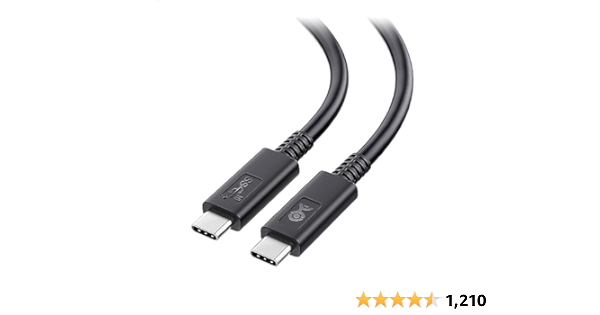Hello all that needed help, I bought these from Amazon (U.S.):

My set up:
Studio Display
Mac Mini M1
Dell laptop /w a Thunderbolt 3 port
I used the two USBC cables that came with the KVM, worked flawlessly. They're a bit on the pricey side but they come with two USBC 10gig cables (That actually work).
My Dell actually detected it as Thunderbolt, not just USB-c.
Hope this helps
-----
Side note: I've also purchased Cablematters USBC cables to test, but they only worked upon a fresh restart, once I hit the switch button, there were flickers and the screen turns off. So don't purchase these and use the original cables that came with the switch.


USB C Switch,Bi-Directional USB C Switcher 2 Computers,MLEEDA USB Type C KVM Switch 8K@60Hz 4K@120Hz Video/10Gbps Data Transfer/100W Charging,Compatible with Thunderbolt Device,2 USB-C Cables Included
USB C Switch,Bi-Directional USB C Switcher 2 Computers,MLEEDA USB Type C KVM Switch 8K@60Hz 4K@120Hz Video/10Gbps Data Transfer/100W Charging,Compatible with Thunderbolt Device,2 USB-C Cables Included
www.amazon.com
My set up:
Studio Display
Mac Mini M1
Dell laptop /w a Thunderbolt 3 port
I used the two USBC cables that came with the KVM, worked flawlessly. They're a bit on the pricey side but they come with two USBC 10gig cables (That actually work).
My Dell actually detected it as Thunderbolt, not just USB-c.
Hope this helps
-----
Side note: I've also purchased Cablematters USBC cables to test, but they only worked upon a fresh restart, once I hit the switch button, there were flickers and the screen turns off. So don't purchase these and use the original cables that came with the switch.

Cable Matters [USB-IF Certified] 10 Gbps Gen 2 USB C to USB C Cable 3.3 ft / 1m with 8K Video and 100W Power Delivery in Black
Cable Matters [USB-IF Certified] 10 Gbps Gen 2 USB C to USB C Cable 3.3 ft / 1m with 8K Video and 100W Power Delivery in Black
www.amazon.com
As an Amazon Associate, MacRumors earns a commission from qualifying purchases made through links in this post.



